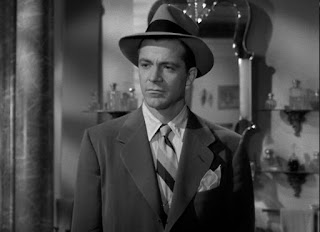Stars: Sally Field, Rob Liebman, Pat Hingle. Beau Bridges
Best Quote: "No lady of mine is gonna play a whore"' - Burt Reynolds to Sally Field about Norma Rae.
Norma Rae has two things going for it. One, a great performance by Sally Field. Two, its a rare "Pro-union" movie. Otherwise, its pretty damn mediocre. The phony characters, needless vulgarity*, and fake Southern accents are a downer. Plus, its neither a sophisticated political movie nor a personal drama - instead its a didactic Good union vs. Evil business melodrama. The Direction is adequate. The run-time is 2 hours - and it feels longer.
The Idiot Union Organizer
Norma Rae is really a two character movie. There's Sally Field, and then there's Union Rep "Reuben" from NYC. You wonder why he was selected, since he's obnoxious and bad at selling the union. Reuben's constantly patronizing the small-town folks, bitching about the food, and talking about himself. Hey, Reuben it isn't about you - its about the Union! And low charisma Ron Leibman, doesn't help things. Where was Dustin Hoffman when you need him?
The Wasted Supporting Cast
None of the other characters make an impact. At least 25% of the Union members and factory hands are black, but they don't have names and speak only about 10 lines. Beau Bridges is the bland, good-looking, supportive husband, and Pat Hingle is the bland, tired, supportive father. The anti-union Factory managers are interchangeable scowling rednecks in short sleeves.
Norma Rae is Politically Correct - Or White Man Bad
- The Evil Factory managers? White men
- Workers skeptical of the Union? White men.
- Minister who refuses to let the Union use the Church? White Guy.
- Goons that beat up a black union member? White men.
- Someone uses an Anti-Jewish Slur? White Guy.
- But Union Supporters? Mostly women, blacks and the Guy from NYC
- Minister who lets the Union use his Church? A black man
Best Scene
Norma Rae hold up a "Union sign" & all the workers - one by one - shut down their textile machines in support
Worst Scene
When Norma Rae asks to use her Church for a Union Meeting - the Reverend refuses and Norma Rae leaves the Church forever. This is the oddest, and worst written scene in the whole movie for the following reasons:- Its completely unnecessary and doesn't advance the plot.
- Norma Rae's conversation with the Reverend is extremely strained and clipped - despite her going to this church "Since she was six".
- She shows no respect for the Pastor, instead she *demands* to use the church and threatens to walk if he refuses**
- Even more ridiculous, the Reverend - who's known her for years - doesn't explain his position and quote scripture. Instead,, he just snips that: "The Church is the House of God" and "We'll miss your singing in the choir every Sunday".
Summary: Despite a good Sally Field performance, Norma Rae didn't really deserve a Best Picture nomination. It has a simplistic "Hey gang, lets Unionize the factory" story, an average script, and mediocre direction. If you're a fan of Unions or Sally Field, I'd give it a watch. Rating 2.5 of 4
* = We get Norma Rae being slugged by her "Boyfriend" and 3 mentions of Tampons, among other things.
** = Of course, Howard Dean left his Church over a bike path. But then, Dean's favorite book of The New Testament was Job. So, there's that.






